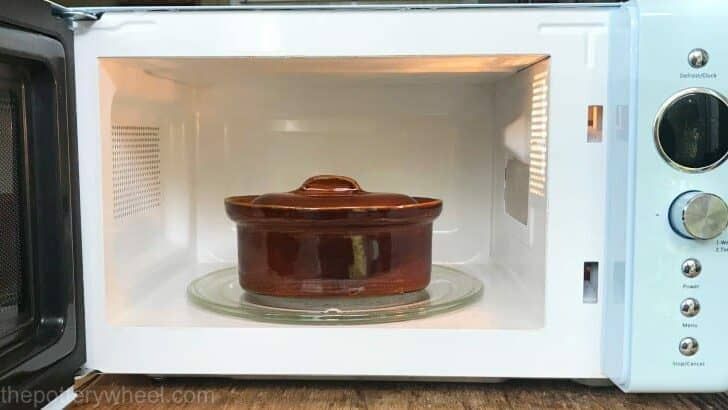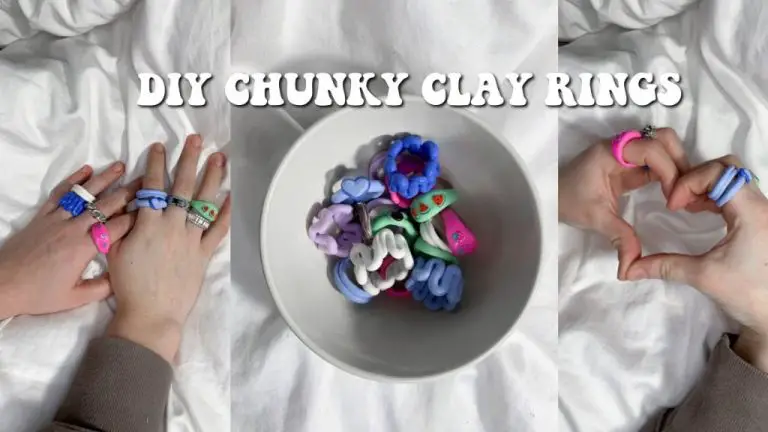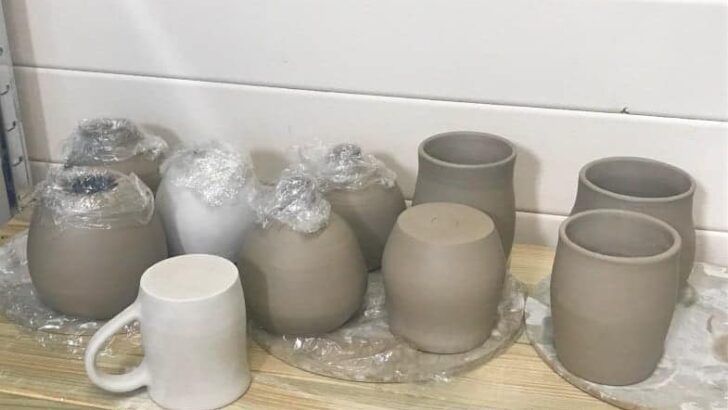How Do You Make Flowers Out Of Ceramic Clay?
Making flowers out of ceramic clay is a fun and creative craft that allows you to produce beautiful decorative flowers. With some clay, simple tools, and a bit of practice, you can make lovely clay flowers in any shape and size you desire.
The process involves sculpting the clay into the flower shapes, letting it dry and cure, and finally decorating and finishing the clay flowers. While there are many techniques for crafting clay flowers, the basic steps include preparing the clay, forming the petals and center, assembling the flower, drying the clay, and applying paint or other finishes.
With an understanding of the clay flower making process, some creativity, and patience as you learn, you’ll be able to craft stunning clay flowers to display around your home, give as gifts, or use for other decorative purposes.
Gather Materials
The first step in making ceramic flowers is gathering the right materials. The type of clay you choose is one of the most important decisions, as it will affect the look, durability, and finishing of your final piece.
There are three main types of clay that work well for crafting clay flowers:
- Polymer clay – Made of polymers, resins and fillers, polymer clay is very versatile and easy to work with. It doesn’t require baking and will air-dry. Polymer clay is lightweight, making it a good choice for jewelry and accessories. Brands like Sculpey and Fimo are popular.
- Air-dry clay – This type of clay dries by evaporation in normal air. It doesn’t require heat curing. Air-dry clay is inexpensive and accessible. However, it can be brittle once dry and may require sealing. Popular brands include Crayola Model Magic and Activa Air-Dry Clay.
- Oven-bake clay – Made from natural clays and minerals, oven-bake clay must be hardened through baking in a kiln or oven. It results in strong, durable ceramic pieces. SculptIt and Pottery Craft are common oven-bake clays.
Besides clay, you’ll also need basic sculpting tools like a rolling pin, silicone sculpting tools, paint brushes, acrylic paints, glazes or finishes, and floral embellishments as desired.
Shape the Clay
Once you have gathered your clay materials, the next step is to knead and soften the clay. Take your clay and knead it in your hands, working it until it becomes soft and pliable. You can also soften clay by conditioning it. To condition clay, form it into a ball and roll or press it against a hard, smooth surface using your palms. This helps distribute moisture evenly throughout and removes any air pockets. Continue kneading and conditioning the clay until it is smooth, elastic, and free of lumps.
Shaping softened clay into your desired flower shapes comes next. Make sure your hands are clean while handling the clay so that you don’t discolor it or leave imprints. Dust your hands and work surface lightly with cornstarch if needed to prevent sticking. Carefully shape rounded balls or teardrop shapes for flower centers. Roll out pieces into flats sheets, then cut out petal shapes. Pinch and ruffle the edges of petals for realism and texture if desired. Work slowly and gently to avoid tearing the clay.
Make the Flower Center
The center of the flower forms the base that the petals will be attached to. For simple flowers, roll balls or cones of clay for the center.
To make a ball, roll the clay between your palms into a smooth sphere. Make balls of various sizes depending on the scale of your flower. Larger flowers will need a bigger center.
For a cone shape, roll the clay into a ball first. Then pinch one end to form a tapered cone. The wide base of the cone will support the petals.
Make sure the clay is not too wet or sticky. Add a little cornstarch if needed so the center holds its shape without sagging.
Let the flower center fully dry and harden before adding petals. An evenly dried and cured center will provide a solid foundation for assembling the rest of the flower.
Create the Petals
Creating the petals for your clay flower is an important step that requires a delicate touch. When working with clay, the petals can be fragile, so handle them gently as you cut and shape them.
To create the petals, roll small balls or teardrop shapes from your clay. The size will depend on the flower you are making – smaller flowers like daisies will need tiny petals while larger blooms like peonies require bigger petals.
Use a knife, small cookie cutter, or petal cutter to cut out the basic petal shape, making each one slightly different for a natural look. Place your clay petal on a padded surface and use a ball stylus to add veins and details. Pinch and ruffle the edges of each petal to look lifelike.
Carefully shape and curve each petal using your fingers and tools. Clay petals can be fragile at this stage, so handle them gently to avoid tearing. Work slowly and steadily to create delicate, realistic looking petals for your clay flower.
Assemble the Flower
Once you have created the flower center and petals, it’s time to assemble them together into a complete flower.
Start by taking the flower center and laying it on your work surface. Then, take one of the petals and apply a small amount of water or slip to the bottom of the petal using a paintbrush or your finger. This will act as a glue to attach the petal.
Gently press the bottom of the petal to the center of the flower. Apply firm pressure to ensure it sticks. Attach petals one at a time in this manner, working your way around the flower center until all petals are attached.
Arrange the petals in a natural looking flower shape, spacing them evenly and overlapping them slightly. The number of petals can vary based on the type of flower – some have as few as 5 while others may have up to 50 petals.
Once all the petals are securely attached, your ceramic flower is fully assembled and ready for detailing, drying and finishing.
Add Details
Adding delicate details like veins, stamens, and leaves can really bring your clay flowers to life. Here are some tips for achieving realistic details:
For flower veins, use a toothpick or skewer to gently press into the petals. Create a central vein down the middle of each petal, and branching side veins. Make the veins narrower at the base of the petal and wider toward the tip.
To add stamens, roll tiny balls of clay into oval or cylindrical shapes. Pinch one end to create a narrow filament, then attach the stamens around the center of the flower. Bend the filaments gently for a natural look.
For leaves, roll out clay into flat, teardrop or oval shapes. Use a toothpick to etch in veins. Pinch the base of the leaf to form the stem. Attach leaves around the flower stems for added realism.
Go over your clay flower and look for any other details in real flowers that you can mimic. The tiny touches like veins and stamens will really take your ceramic flowers to the next level.
Let Dry and Cure
After assembling your ceramic clay flower, you will need to let it fully dry and cure before applying any finishes or using it. There are two main ways to dry and cure ceramic clay:
Air Dry
Air drying is the natural process of letting your ceramic clay flower sit out at room temperature until all the moisture evaporates. This is the slower drying method, but requires less effort. To air dry:
- Place the finished flower on parchment paper or a drying rack in a room temperature area with good airflow.
- Allow 1-2 weeks for thin pieces to fully air dry. Thicker pieces may take longer.
- Check for cracks and smooth them out while the clay is still pliable.
- Once totally dry, the clay will be hardened and cool to the touch.
Bake
Baking your ceramic flower in the oven speeds up the drying process. Follow these steps:
- Place flower on a baking sheet lined with parchment paper.
- Bake at 225°F for 30 minutes per 1/4 inch of thickness.
- Turn off oven and allow to cool completely before removing.
- Check for cracks and smooth before baking again if needed.
Baking dries the ceramic clay much faster than air drying. But take care not to over-bake, as higher temperatures may cause cracking or scorching. Allow sufficient time for cooling to prevent stresses on the structure.
Apply Finish
The final step when making ceramic flowers is to apply a finish like paint, glaze or sealant. This not only enhances the appearance of the clay flowers, but also helps protect and preserve them.
Acrylic paints work well for hand-painting ceramic flowers. Make sure to use paint formulated for ceramics. Apply in thin layers, letting each layer dry before adding another. Paints allow you to add details like veins on petals or designs.
Glazing involves coating the entire flower with colored ceramic glaze. This gives an even, uniform look. Glazes often create a glossy or shiny effect. Use brush-on or dipping glazes made for ceramics. Firing the pieces at the required temperature will cure the glaze.
Sealing with a water-based ceramic sealer will protect the flowers without altering the look. Multiple coats can be applied for a durable finish. Sealers prevent paint or glaze from fading over time.
Consider if you want a matte or glossy look. Test finishes on clay scraps first. Use an appropriate top coat to get your desired effect. Then display or use the beautiful ceramic flowers you created!
Display or Use Your Clay Flower Creations
Once your clay flowers are fully dry and cured, it’s time to decide how to display them or put them to use. Clay flowers make charming additions to any decor and also make thoughtful handmade gifts. Here are some ways to showcase your ceramic flower creations:
Display in Vases
Just like real flowers, clay blooms look beautiful arranged in vases around the home. Choose vases in colors that complement or match your clay flowers. For variety, mix clay flowers with real blooms or other faux flowers and greenery.
Give as Gifts
Handmade clay flowers make heartfelt gifts for any occasion. Make a bouquet or plant for a birthday, hostess gift, or holiday present. Clay flowers last much longer than real ones, so they can be enjoyed for years to come.
Craft Jewelry
Clay flowers can become lovely pendants, earrings, rings, or hair clips. Use floral wire or jewelry findings to turn your blooms into wearable art. Carefully drill a hole before baking or use strong glue to attach findings after curing.




